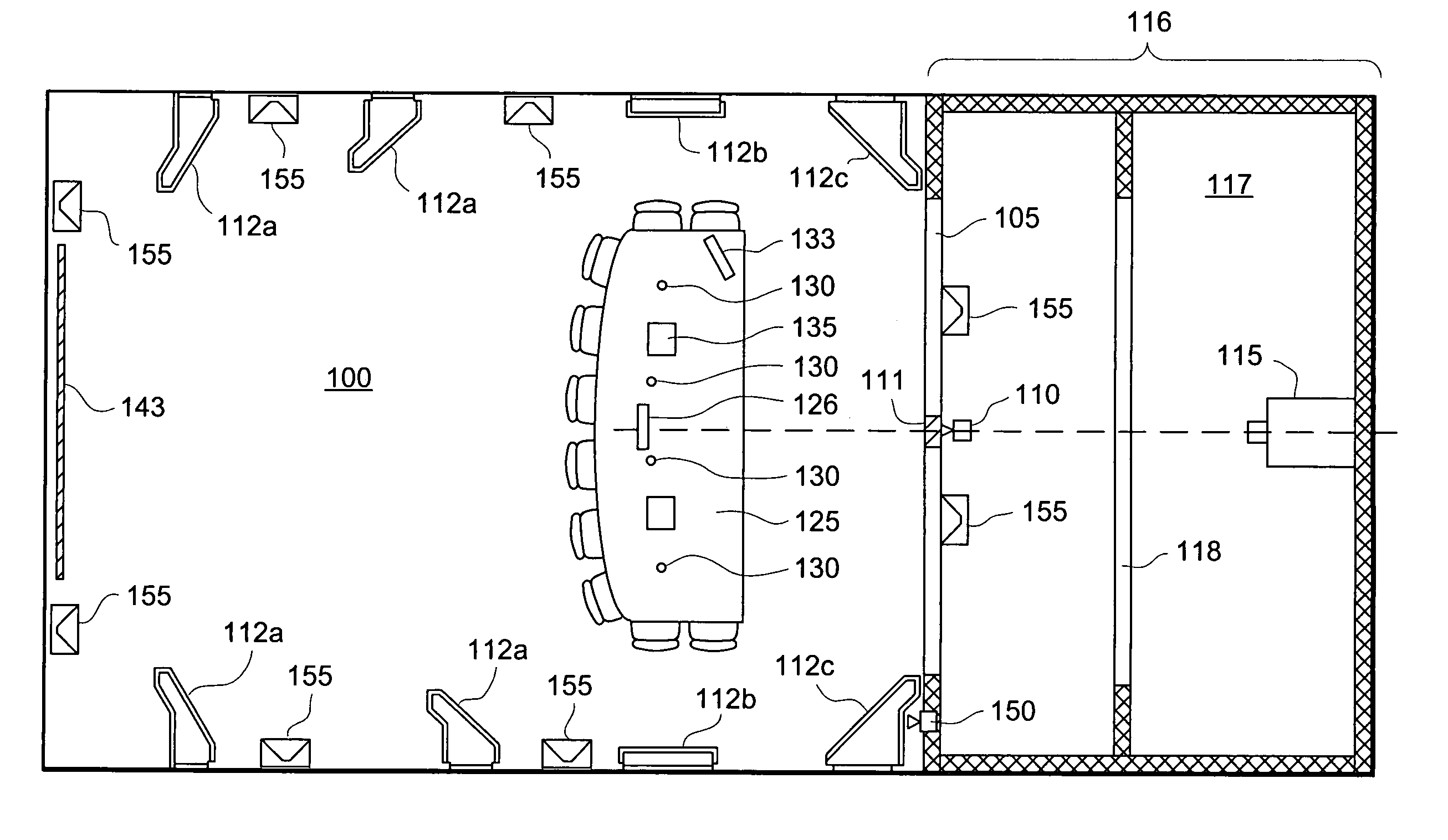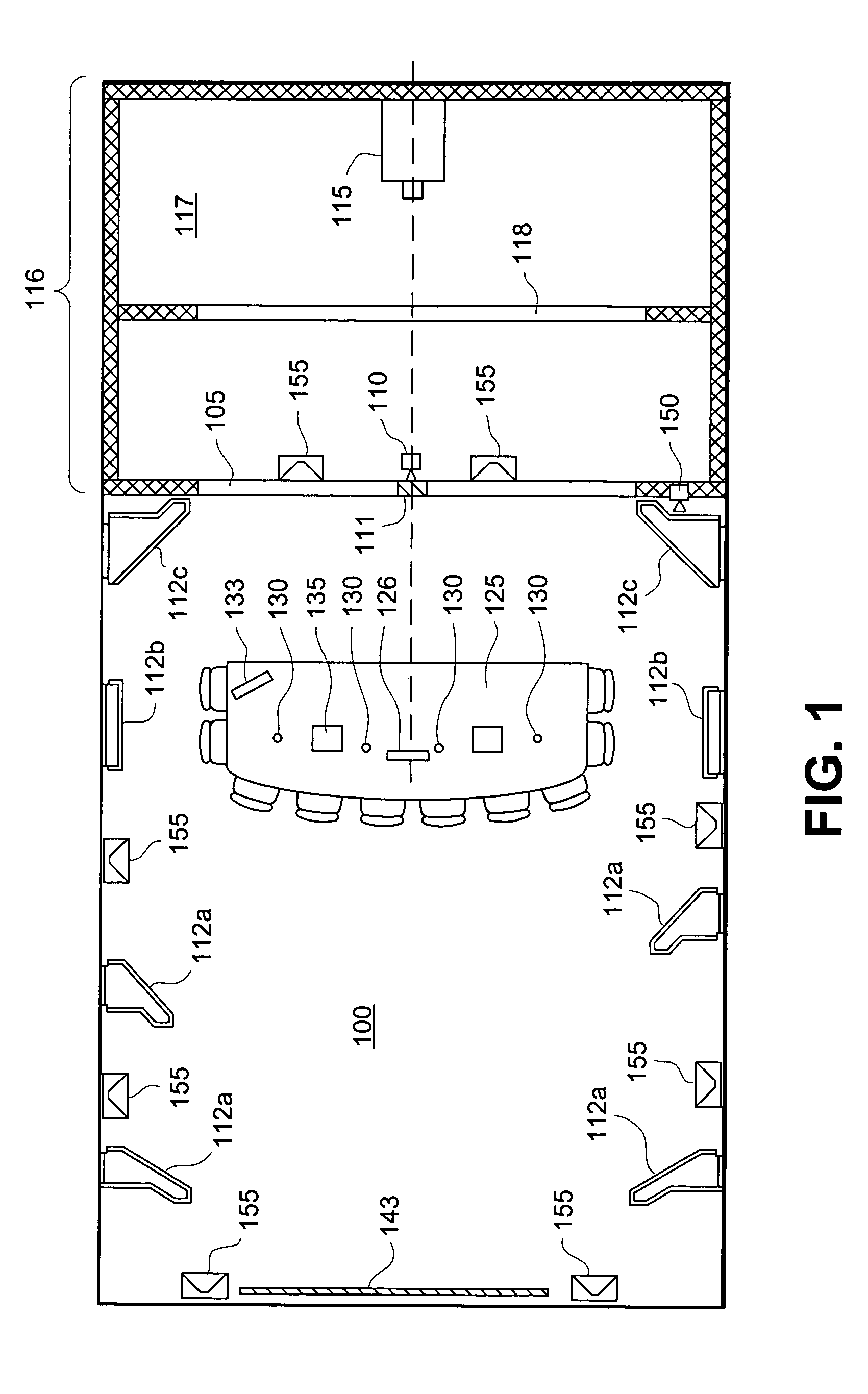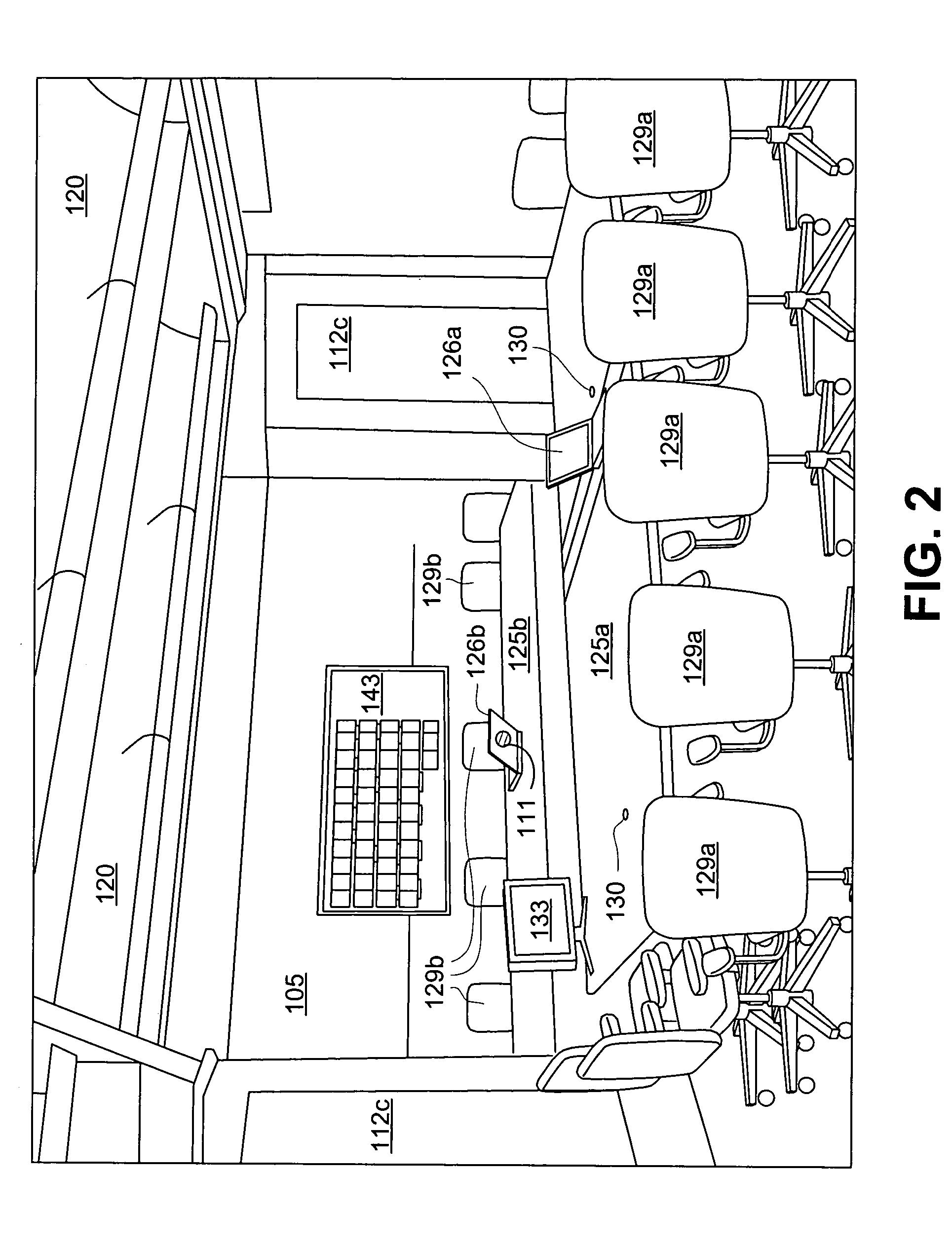Virtual conference room
a virtual conference and video conferencing technology, applied in the field of virtual conference rooms, can solve the problems of inconvenient group interaction of individuals inability to see the reactions, body language or other activities of participants in the source room, and the television-to-television model of current video conferencing systems is not conducive to how individuals normally interact in the group setting. achieve the effect of overcompensating deficiencies and limitations and high fidelity resolution
- Summary
- Abstract
- Description
- Claims
- Application Information
AI Technical Summary
Benefits of technology
Problems solved by technology
Method used
Image
Examples
Embodiment Construction
[0030]FIG. 1 illustrates a plan view and FIG. 2 provides a perspective view of a physical layout of a video conference room 100 in a first preferred embodiment. This video conference room 100 is electronically coupled over a network connection to another video conference room having substantially similar configuration to permit the transmission of images and sound between the conference rooms. This overall configuration of two conference rooms is shown in FIG. 3; the particular illustrated mirror-image orientation of the two rooms 100 is not a requirement of the invention since in fact the rooms are connected over a network, and their physical orientation to each other is irrelevant.
[0031]As shown in FIG. 1, this conference room 100 has a first camera 110 and a large format display system 116. The lens of the first camera 110 is directed toward the conference room 100 and its participants. The large format display system 116 includes a projection display device 115 for projecting an...
PUM
 Login to View More
Login to View More Abstract
Description
Claims
Application Information
 Login to View More
Login to View More - R&D
- Intellectual Property
- Life Sciences
- Materials
- Tech Scout
- Unparalleled Data Quality
- Higher Quality Content
- 60% Fewer Hallucinations
Browse by: Latest US Patents, China's latest patents, Technical Efficacy Thesaurus, Application Domain, Technology Topic, Popular Technical Reports.
© 2025 PatSnap. All rights reserved.Legal|Privacy policy|Modern Slavery Act Transparency Statement|Sitemap|About US| Contact US: help@patsnap.com



